Blog - Foot Doctor, Chambersburg and McConnellsburg, PA
Are Ingrown Toenails Painful?
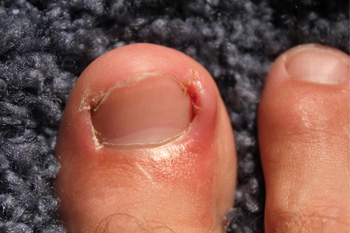 The medical condition that is referred to as ingrown toenails can often cause severe pain and discomfort. It occurs when the nail on the big toe grows into the outer edges of the skin. The symptoms that are often associated with this ailment can include redness, tenderness, and swelling on or around the affected area. The body may naturally produce a yellowish fluid that may drain from the toe, which can be a result of the irritation an ingrown toenail may cause. The foot may feel better after it is soaked in warm water, and this can soften the skin surrounding the nail. If medical conditions exist that include diabetes or fungal infections, it is strongly suggested that you are under the care of a podiatrist who can help you to manage this ailment.
The medical condition that is referred to as ingrown toenails can often cause severe pain and discomfort. It occurs when the nail on the big toe grows into the outer edges of the skin. The symptoms that are often associated with this ailment can include redness, tenderness, and swelling on or around the affected area. The body may naturally produce a yellowish fluid that may drain from the toe, which can be a result of the irritation an ingrown toenail may cause. The foot may feel better after it is soaked in warm water, and this can soften the skin surrounding the nail. If medical conditions exist that include diabetes or fungal infections, it is strongly suggested that you are under the care of a podiatrist who can help you to manage this ailment.
Ingrown toenails can become painful if they are not treated properly. For more information about ingrown toenails, contact Dr. Steven Schwartz of Pennsylvania. Our doctor can provide the care you need to keep you pain-free and on your feet.
Ingrown Toenails
Ingrown toenails occur when a toenail grows sideways into the bed of the nail, causing pain, swelling, and possibly infection.
Causes
- Bacterial infections
- Improper nail cutting such as cutting it too short or not straight across
- Trauma to the toe, such as stubbing, which causes the nail to grow back irregularly
- Ill-fitting shoes that bunch the toes too close together
- Genetic predisposition
Prevention
Because ingrown toenails are not something found outside of shoe-wearing cultures, going barefoot as often as possible will decrease the likeliness of developing ingrown toenails. Wearing proper fitting shoes and using proper cutting techniques will also help decrease your risk of developing ingrown toenails.
Treatment
Ingrown toenails are a very treatable foot condition. In minor cases, soaking the affected area in salt or antibacterial soaps will not only help with the ingrown nail itself, but also help prevent any infections from occurring. In more severe cases, surgery is an option. In either case, speaking to your podiatrist about this condition will help you get a better understanding of specific treatment options that are right for you.
If you have any questions please feel free to contact our offices located in Chambersburg, and Mcconnellsburg, PA . We offer the newest diagnostic and treatment technologies for all your foot and ankle needs.
What Is The Medical Name For Toenail Fungus?
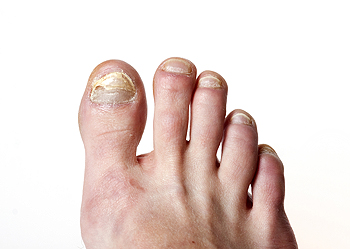 When the toenails are affected by a fungus, it is medically referred to as onychomycosis. It enters the body and lives underneath the nail. Symptoms may gradually appear, and these can include a distorted nail that lifts off of the nail bed, in addition to the nail becoming thick and discolored. This contagious fungus thrives in moist and warm environments, which can consist of public swimming areas, shower room floors, and locker rooms. There may be pre-existing reasons why this type of fungus may develop. These can include medical conditions such as diabetes, poor circulation, or patients who have a weakened immune system. If you are afflicted with toenail fungus, it is suggested that you are under the care of a podiatrist who can prescribe the correct medication for you.
When the toenails are affected by a fungus, it is medically referred to as onychomycosis. It enters the body and lives underneath the nail. Symptoms may gradually appear, and these can include a distorted nail that lifts off of the nail bed, in addition to the nail becoming thick and discolored. This contagious fungus thrives in moist and warm environments, which can consist of public swimming areas, shower room floors, and locker rooms. There may be pre-existing reasons why this type of fungus may develop. These can include medical conditions such as diabetes, poor circulation, or patients who have a weakened immune system. If you are afflicted with toenail fungus, it is suggested that you are under the care of a podiatrist who can prescribe the correct medication for you.
If left untreated, toenail fungus may spread to other toenails, skin, or even fingernails. If you suspect you have toenail fungus it is important to seek treatment right away. For more information about treatment, contact Dr. Steven Schwartz of Pennsylvania. Our doctor can provide the care you need to keep you pain-free and on your feet.
Symptoms
- Warped or oddly shaped nails
- Yellowish nails
- Loose/separated nail
- Buildup of bits and pieces of nail fragments under the nail
- Brittle, broken, thickened nail
Treatment
If self-care strategies and over-the-counter medications does not help your fungus, your podiatrist may give you a prescription drug instead. Even if you find relief from your toenail fungus symptoms, you may experience a repeat infection in the future.
Prevention
In order to prevent getting toenail fungus in the future, you should always make sure to wash your feet with soap and water. After washing, it is important to dry your feet thoroughly especially in between the toes. When trimming your toenails, be sure to trim straight across instead of in a rounded shape. It is crucial not to cover up discolored nails with nail polish because that will prevent your nail from being able to “breathe”.
In some cases, surgical procedure may be needed to remove the toenail fungus. Consult with your podiatrist about the best treatment options for your case of toenail fungus.
If you have any questions, please feel free to contact our offices located in Chambersburg, and Mcconnellsburg, PA . We offer the newest diagnostic and treatment technologies for all your foot care needs.
Why Stretching Is Important Before and After Running
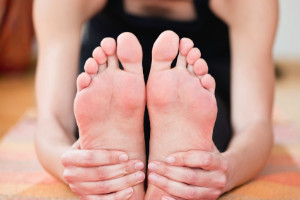 People who experience running injuries may find that they lose the motivation to continue running or jogging. Additionally, this type of injury can affect everyday activities, and may cause severe pain and discomfort. The average runner typically runs 1400 steps per mile. With that in mind, it is important to properly stretch the muscles, tendons and ligaments to prepare for your activity. This can be accomplished by warming up and cooling down before and after running. Flexibility can be maintained by performing lunges, and mimicking movements such as marching. The bones can become stronger as strength training is practiced, in addition to increased running efficiency. If you would like more information about how running injuries can affect the feet, please consult with a podiatrist.
People who experience running injuries may find that they lose the motivation to continue running or jogging. Additionally, this type of injury can affect everyday activities, and may cause severe pain and discomfort. The average runner typically runs 1400 steps per mile. With that in mind, it is important to properly stretch the muscles, tendons and ligaments to prepare for your activity. This can be accomplished by warming up and cooling down before and after running. Flexibility can be maintained by performing lunges, and mimicking movements such as marching. The bones can become stronger as strength training is practiced, in addition to increased running efficiency. If you would like more information about how running injuries can affect the feet, please consult with a podiatrist.
All runners should take extra precaution when trying to avoid injury. If you have any concerns about your feet, contact Dr. Steven Schwartz of Pennsylvania. Our doctor will treat your foot and ankle needs.
How to Prevent Running Injuries
There are a lot of mistakes a runner can make prior to a workout that can induce injury. A lot of athletes tend to overstretch before running, instead of saving those workouts for a post-run routine. Deep lunges and hand-to-toe hamstring pulls should be performed after a workout instead of during a warmup. Another common mistake is jumping into an intense routine before your body is physically prepared for it. You should try to ease your way into long-distance running instead of forcing yourself to rush into it.
More Tips for Preventing Injury
- Incorporate Strength Training into Workouts - This will help improve the body’s overall athleticism
- Improve and Maintain Your Flexibility – Stretching everyday will help improve overall performance
- “Warm Up” Before Running and “Cool Down” Afterward – A warm up of 5-10 minutes helps get rid of lactic acid in the muscles and prevents delayed muscle soreness
- Cross-Training is Crucial
- Wear Proper Running Shoes
- Have a Formal Gait Analysis – Poor biomechanics can easily cause injury
If you have any questions, please feel free to contact our offices located in Chambersburg, and Mcconnellsburg, PA . We offer the newest diagnostic and treatment technologies for all your foot care needs.
The Importance of Caring for Foot Wounds
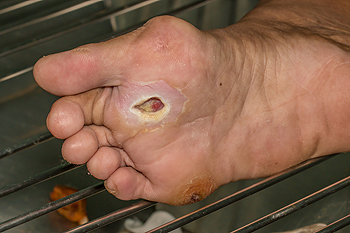 It is extremely important to seek immediate care once you notice you have a wound on your foot, especially if you are diabetic. If left untreated, and not healed properly, it is likely for a foot wound to turn into a foot ulcer. When this occurs, there is a chance that the ulcer may get infected, and in severe cases, this may lead to the need for amputation. Wounds may consist of any breaks in the skin, including cuts, blisters, cracked skin, ingrown toenails, and loss of skin due to a corn or callus. You may experience swelling, redness, pain, the appearance of pus, and the feeling of warmth on the skin as a result of having a wound. As mentioned above, those with diabetes must be diligent with checking on the health of their feet, as they tend to have less feeling in the foot region due to common circulation complications. If this is experienced, it’s possible a wound may form and go unnoticed if not directly felt. Wearing shoes that leave ample room for your toes, as well as avoiding walking around barefoot can help in preventing the formation of wounds. If you have a wound and would like to discuss your treatment options, we suggest you consult with a podiatrist for professional care and guidance.
It is extremely important to seek immediate care once you notice you have a wound on your foot, especially if you are diabetic. If left untreated, and not healed properly, it is likely for a foot wound to turn into a foot ulcer. When this occurs, there is a chance that the ulcer may get infected, and in severe cases, this may lead to the need for amputation. Wounds may consist of any breaks in the skin, including cuts, blisters, cracked skin, ingrown toenails, and loss of skin due to a corn or callus. You may experience swelling, redness, pain, the appearance of pus, and the feeling of warmth on the skin as a result of having a wound. As mentioned above, those with diabetes must be diligent with checking on the health of their feet, as they tend to have less feeling in the foot region due to common circulation complications. If this is experienced, it’s possible a wound may form and go unnoticed if not directly felt. Wearing shoes that leave ample room for your toes, as well as avoiding walking around barefoot can help in preventing the formation of wounds. If you have a wound and would like to discuss your treatment options, we suggest you consult with a podiatrist for professional care and guidance.
Wound care is an important part in dealing with diabetes. If you have diabetes and a foot wound or would like more information about wound care for diabetics, consult with Dr. Steven Schwartz from Pennsylvania. Our doctor will assess your condition and provide you with quality foot and ankle treatment.
What Is Wound Care?
Wound care is the practice of taking proper care of a wound. This can range from the smallest to the largest of wounds. While everyone can benefit from proper wound care, it is much more important for diabetics. Diabetics often suffer from poor blood circulation which causes wounds to heal much slower than they would in a non-diabetic.
What Is the Importance of Wound Care?
While it may not seem apparent with small ulcers on the foot, for diabetics, any size ulcer can become infected. Diabetics often also suffer from neuropathy, or nerve loss. This means they might not even feel when they have an ulcer on their foot. If the wound becomes severely infected, amputation may be necessary. Therefore, it is of the upmost importance to properly care for any and all foot wounds.
How to Care for Wounds
The best way to care for foot wounds is to prevent them. For diabetics, this means daily inspections of the feet for any signs of abnormalities or ulcers. It is also recommended to see a podiatrist several times a year for a foot inspection. If you do have an ulcer, run the wound under water to clear dirt from the wound; then apply antibiotic ointment to the wound and cover with a bandage. Bandages should be changed daily and keeping pressure off the wound is smart. It is advised to see a podiatrist, who can keep an eye on it.
If you have any questions, please feel free to contact our offices located in Chambersburg, and Mcconnellsburg, PA . We offer the newest diagnostic and treatment technologies for all your foot care needs.
Elderly People and Foot Pain
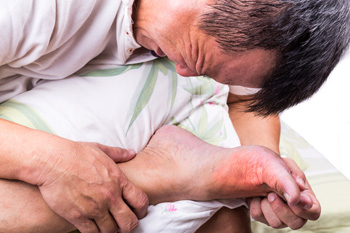 Patients who have foot pain may experience difficulty in walking in addition to maintaining proper balance. This can be a common condition among older patients, and may lead to an increased risk of falling. Research has indicated that varying types of foot pain affects one in four elderly people. Chronic foot pain can make walking difficult, and may be managed by being under the care of a podiatrist. The benefits of identifying the cause of foot pain followed by correctly treating it can possibly help to reinstate independence to elderly patients. Additionally, it may help seniors to realize that their foot conditions may be a treatable medical condition, and may possibly have little to do with aging. If you have any type of foot pain, it is strongly recommended that you consult with a podiatrist who can guide you toward correct treatment options.
Patients who have foot pain may experience difficulty in walking in addition to maintaining proper balance. This can be a common condition among older patients, and may lead to an increased risk of falling. Research has indicated that varying types of foot pain affects one in four elderly people. Chronic foot pain can make walking difficult, and may be managed by being under the care of a podiatrist. The benefits of identifying the cause of foot pain followed by correctly treating it can possibly help to reinstate independence to elderly patients. Additionally, it may help seniors to realize that their foot conditions may be a treatable medical condition, and may possibly have little to do with aging. If you have any type of foot pain, it is strongly recommended that you consult with a podiatrist who can guide you toward correct treatment options.
Foot Pain
Foot pain can be extremely painful and debilitating. If you have a foot pain, consult with Dr. Steven Schwartz from Pennsylvania. Our doctor will assess your condition and provide you with quality foot and ankle treatment.
Causes
Foot pain is a very broad condition that could be caused by one or more ailments. The most common include:
- Bunions
- Hammertoes
- Plantar Fasciitis
- Bone Spurs
- Corns
- Tarsal Tunnel Syndrome
- Ingrown Toenails
- Arthritis (such as Gout, Rheumatoid, and Osteoarthritis)
- Flat Feet
- Injury (from stress fractures, broken toe, foot, ankle, Achilles tendon ruptures, and sprains)
- And more
Diagnosis
To figure out the cause of foot pain, podiatrists utilize several different methods. This can range from simple visual inspections and sensation tests to X-rays and MRI scans. Prior medical history, family medical history, and any recent physical traumatic events will all be taken into consideration for a proper diagnosis.
Treatment
Treatment depends upon the cause of the foot pain. Whether it is resting, staying off the foot, or having surgery; podiatrists have a number of treatment options available for foot pain.
If you have any questions, please feel free to contact our offices located in Chambersburg, and Mcconnellsburg, PA . We offer the newest diagnostic and treatment technologies for all your foot care needs.
Where Can Corns Form?
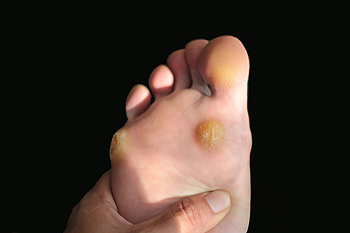 If you have a corn that has formed between the toes, you are most likely familiar with the pain and discomfort this condition may cause. It generally develops as a result of excess friction from wearing shoes and socks that do not fit correctly, and can produce severe discomfort. Additionally, they may form on the tops or sides of the toes for similar reasons. Patients have found moderate relief when the affected foot is soaked in warm water, followed by using a good moisturizer, which may help to soften the corn. It is also suggested that using an emery board can be beneficial to gently file the corn down. Another method used to decrease discomfort involves using a corn pad until it diminishes in size, which may be helpful in relieving any existing pressure. If you have a corn on any part of your foot that is affecting your daily activities, it is advised that you consult with a podiatrist who can recommend possible removal methods.
If you have a corn that has formed between the toes, you are most likely familiar with the pain and discomfort this condition may cause. It generally develops as a result of excess friction from wearing shoes and socks that do not fit correctly, and can produce severe discomfort. Additionally, they may form on the tops or sides of the toes for similar reasons. Patients have found moderate relief when the affected foot is soaked in warm water, followed by using a good moisturizer, which may help to soften the corn. It is also suggested that using an emery board can be beneficial to gently file the corn down. Another method used to decrease discomfort involves using a corn pad until it diminishes in size, which may be helpful in relieving any existing pressure. If you have a corn on any part of your foot that is affecting your daily activities, it is advised that you consult with a podiatrist who can recommend possible removal methods.
Corns can make walking very painful and should be treated immediately. If you have questions regarding your feet and ankles, contact Dr. Steven Schwartz of Pennsylvania. Our doctor will treat your foot and ankle needs.
Corns: What Are They? And How Do You Get Rid of Them?
Corns are thickened areas on the skin that can become painful. They are caused by excessive pressure and friction on the skin. Corns press into the deeper layers of the skin and are usually round in shape.
Ways to Prevent Corns
There are many ways to get rid of painful corns such as:
- Wearing properly fitting shoes that have been measured by a professional
- Wearing shoes that are not sharply pointed or have high heels
- Wearing only shoes that offer support
Treating Corns
Although most corns slowly disappear when the friction or pressure stops, this isn’t always the case. Consult with your podiatrist to determine the best treatment option for your case of corns.
If you have any questions please feel free to contact our offices located in Chambersburg, and Mcconnellsburg, PA . We offer the newest diagnostic and treatment technologies for all your foot and ankle needs.
How Do Stress Fractures Happen?
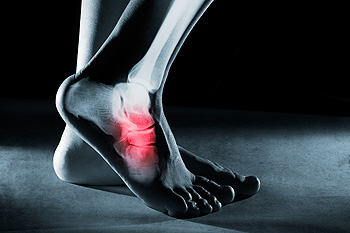 A stress fracture develops gradually from repetitive motions. This can come from participating in sporting activities that involve running and jumping, or from walking for extended periods of time. The medical condition that is known as osteoporosis may diminish the strength of the bones, and tiny cracks may appear in the feet. Research has indicated this may be prevalent among women as the aging process occurs. Additional reasons why stress fractures can occur may be linked to obesity, improper muscle alignment, or from taking specific medication that may weaken the bones. Effective treatment options can include elevating the foot which may help to reduce any existing swelling, in addition to wrapping the foot to provide adequate support. If you have endured a stress fracture, please speak to a podiatrist as quickly as possible who can determine what the best treatment is for you.
A stress fracture develops gradually from repetitive motions. This can come from participating in sporting activities that involve running and jumping, or from walking for extended periods of time. The medical condition that is known as osteoporosis may diminish the strength of the bones, and tiny cracks may appear in the feet. Research has indicated this may be prevalent among women as the aging process occurs. Additional reasons why stress fractures can occur may be linked to obesity, improper muscle alignment, or from taking specific medication that may weaken the bones. Effective treatment options can include elevating the foot which may help to reduce any existing swelling, in addition to wrapping the foot to provide adequate support. If you have endured a stress fracture, please speak to a podiatrist as quickly as possible who can determine what the best treatment is for you.
Activities where too much pressure is put on the feet can cause stress fractures. To learn more, contact Dr. Steven Schwartz from Pennsylvania. Our doctor can provide the care you need to keep your pain free and on your feet.
Dealing with Stress Fractures of the Foot and Ankle
Stress fractures occur in the foot and ankle when muscles in these areas weaken from too much or too little use. The feet and ankles then lose support when walking or running from the impact of the ground. Since there is no protection, the bones receive the full impact of each step. Stress on the feet can cause cracks to form in the bones, thus creating stress fractures.
What Are Stress Fractures?
Stress fractures occur frequently in individuals whose daily activities cause great impact on the feet and ankles. Stress factors are most common among:
- Runners
- People affected with Osteoporosis
- Tennis or basketball players
- Gymnasts
- High impact workouts
Symptoms
Pain from the fractures occur in the area of the fractures and can be constant or intermittent. It will often cause sharp or dull pain with swelling and tenderness. Engaging in any kind of activity which involves high impact will aggravate pain.
If you have any questions please feel free to contact our offices located in Chambersburg, and Mcconnellsburg, PA . We offer the newest diagnostic and treatment technologies for all your foot and ankle needs.
Frequent Eye Exams May Help To Prevent Falling
 Many people who are over the age of sixty-five are aware of the injuries that may occur from falling. A broken foot may be a common ailment that can happen as a result of falling. Research has indicated that falls are the leading cause of injuries that elderly people endure. There are measures that can be implemented which may help to reduce the risk of falling. These can include removing worn carpets from the living environment, improving the lighting in the house, and installing grab bars in the toilets and shower area. Additionally, seniors may experience dehydration and poor eating habits, which may lead to reduced strength. These factors can help to increase the risk of falling. It may be beneficial to have frequent eye exams performed. This may help to prevent tripping over objects which may not have been seen. If you would like more information about how falling can affect the feet, please consult with a podiatrist.
Many people who are over the age of sixty-five are aware of the injuries that may occur from falling. A broken foot may be a common ailment that can happen as a result of falling. Research has indicated that falls are the leading cause of injuries that elderly people endure. There are measures that can be implemented which may help to reduce the risk of falling. These can include removing worn carpets from the living environment, improving the lighting in the house, and installing grab bars in the toilets and shower area. Additionally, seniors may experience dehydration and poor eating habits, which may lead to reduced strength. These factors can help to increase the risk of falling. It may be beneficial to have frequent eye exams performed. This may help to prevent tripping over objects which may not have been seen. If you would like more information about how falling can affect the feet, please consult with a podiatrist.
Preventing falls among the elderly is very important. If you are older and have fallen or fear that you are prone to falling, consult with Dr. Steven Schwartz from Pennsylvania. Our doctor will assess your condition and provide you with quality advice and care.
Every 11 seconds, an elderly American is being treated in an emergency room for a fall related injury. Falls are the leading cause of head and hip injuries for those 65 and older. Due to decreases in strength, balance, senses, and lack of awareness, elderly persons are very susceptible to falling. Thankfully, there are a number of things older persons can do to prevent falls.
How to Prevent Falls
Some effective methods that older persons can do to prevent falls include:
- Enrolling in strength and balance exercise program to increase balance and strength
- Periodically having your sight and hearing checked
- Discuss any medications you have with a doctor to see if it increases the risk of falling
- Clearing the house of falling hazards and installing devices like grab bars and railings
- Utilizing a walker or cane
- Wearing shoes that provide good support and cushioning
- Talking to family members about falling and increasing awareness
Falling can be a traumatic and embarrassing experience for elderly persons; this can make them less willing to leave the house, and less willing to talk to someone about their fears of falling. Doing such things, however, will increase the likelihood of tripping or losing one’s balance. Knowing the causes of falling and how to prevent them is the best way to mitigate the risk of serious injury.
If you have any questions, please feel free to contact our offices located in Chambersburg, and Mcconnellsburg, PA . We offer the newest diagnostic and treatment technologies for all your foot care needs.



